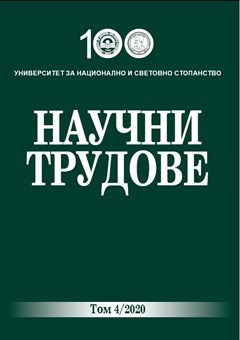Структурна Σ-конвергенция на износа на България и страните от ЦИЕ, членове на Еврозоната
Structural Σ-Convergence of Exports of Bulgaria and CEE Countries Members of the Euro Area
Author(s): Vera PirimovaSubject(s): Politics / Political Sciences, Politics, Economy, National Economy, Supranational / Global Economy, Business Economy / Management, Economic policy, EU-Approach / EU-Accession / EU-Development, Fiscal Politics / Budgeting
Published by: Университет за национално и световно стопанство (УНСС)
Keywords: convergence; divergence; export structure; export difference and similarity indices
Summary/Abstract: The study focuses on the structural σ-convergence of the export of Bulgaria and the five CEE countries, members of the euro area. By systematization of theoretical concepts basic characteristics of economic, trade, club and structural convergence are summarised. Presented and adapted to the structural σ-convergence of exports are two index methods, which are applied by their authors to study economic convergence. The values of the J. Von Hagen and J. Traistaru dissimilarity index and C. Van de Coeving divergence index are determined. They are calculated by commodity groups (according to SITS, Rev. 4) in exports of Bulgaria, Estonia, Latvia, Lithuania, Slovakia and Slovenia, and as aggregated for all exports during the period 2002-2018. The results are presented in graphic form. On the index values basis, commodity groups in exports were derived, on which Bulgaria and the other five CEE countries achieved convergence or differences with the similar structural indicators for euro area exports, entered as reference values. Leading aggregated trends in the divergence and/or convergence of exports of the six countries are outlined. It is concluded that the five member states of the Eurozone have achieved greater convergence than Bulgaria, which in many cases is unstable and is neutral to the introduced and used common currency, the euro. In the study, methods of analysis and synthesis, induction and deduction, methods of empirical index and comparative analysis are applied.
Journal: Научни трудове на УНСС
- Issue Year: 4/2020
- Issue No: 4
- Page Range: 109-135
- Page Count: 27
- Language: Bulgarian

